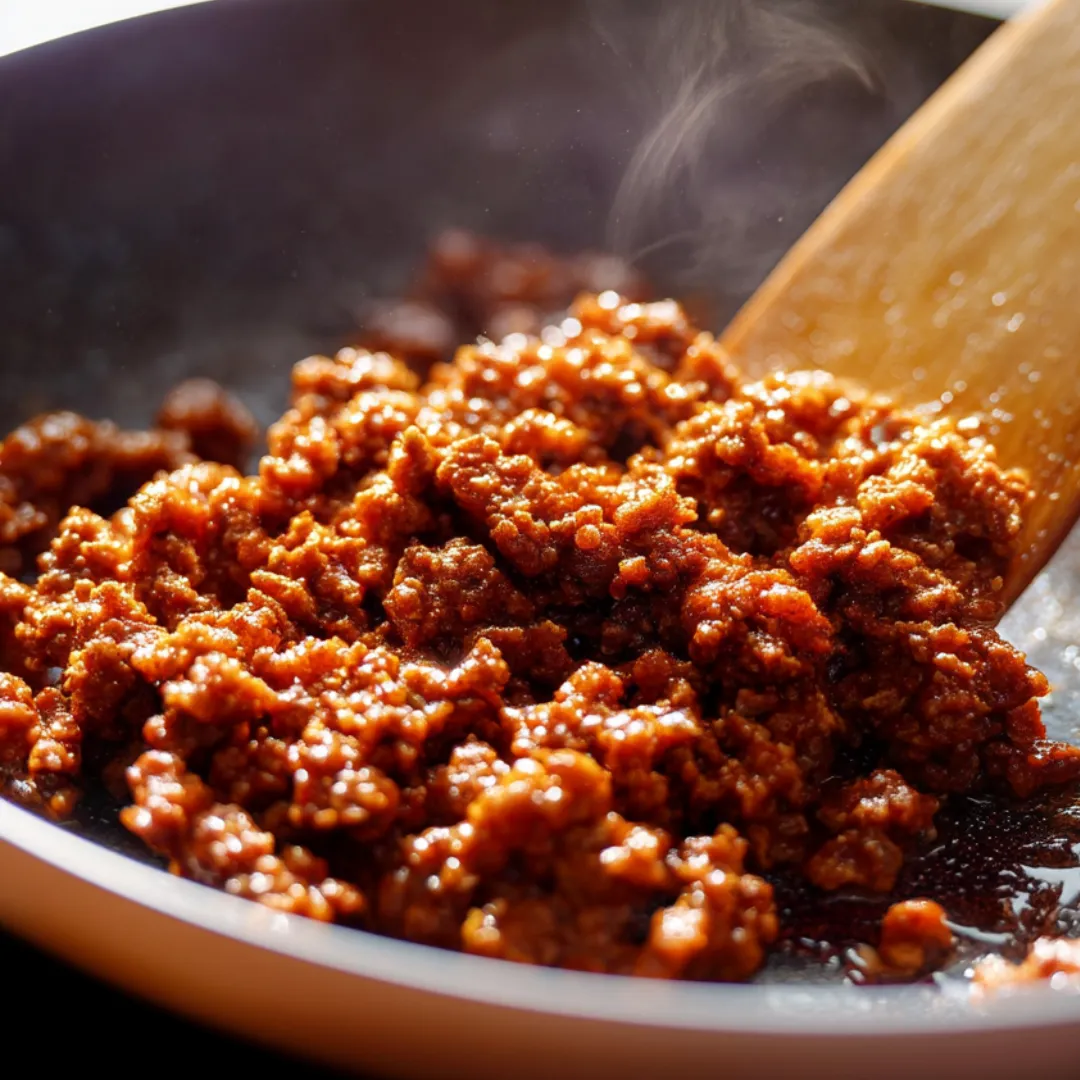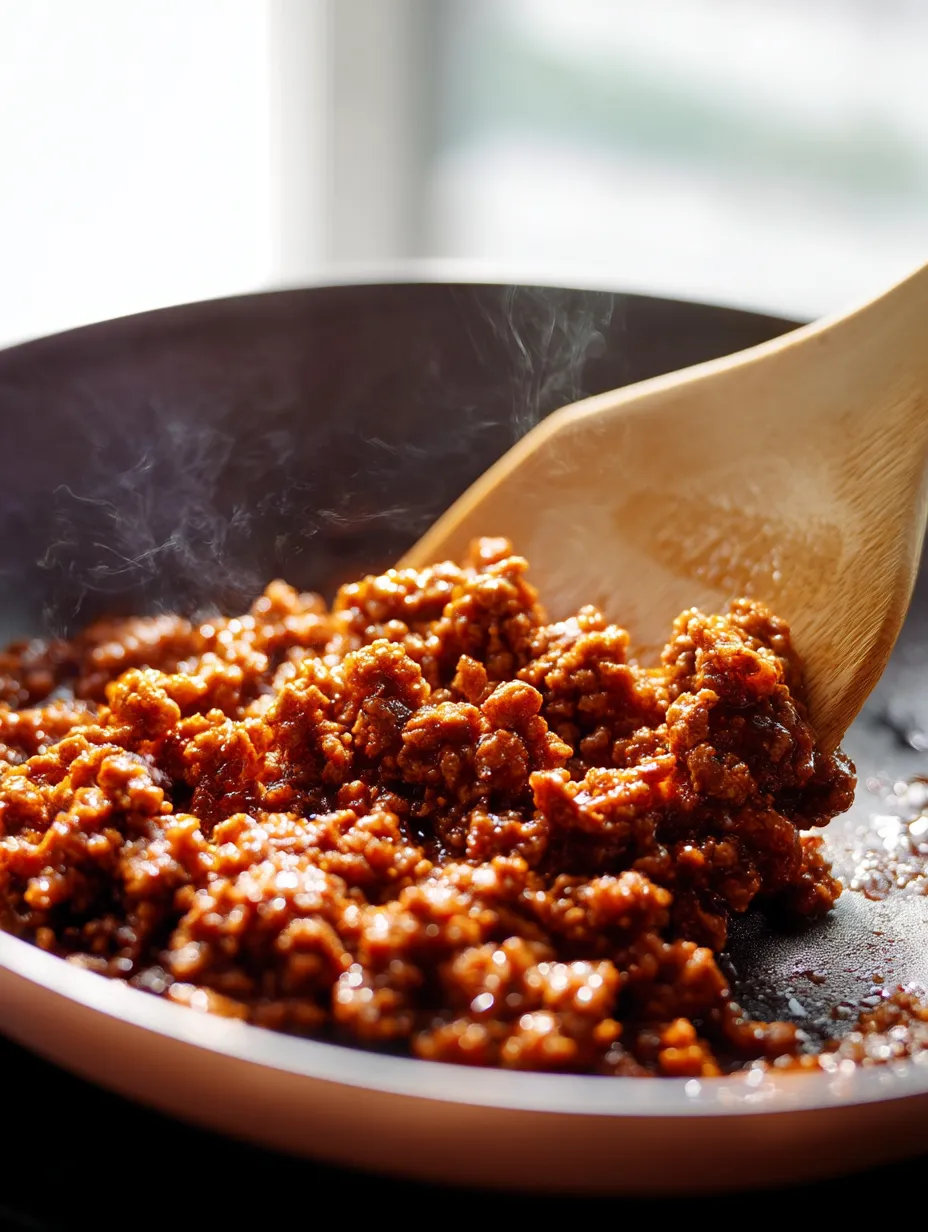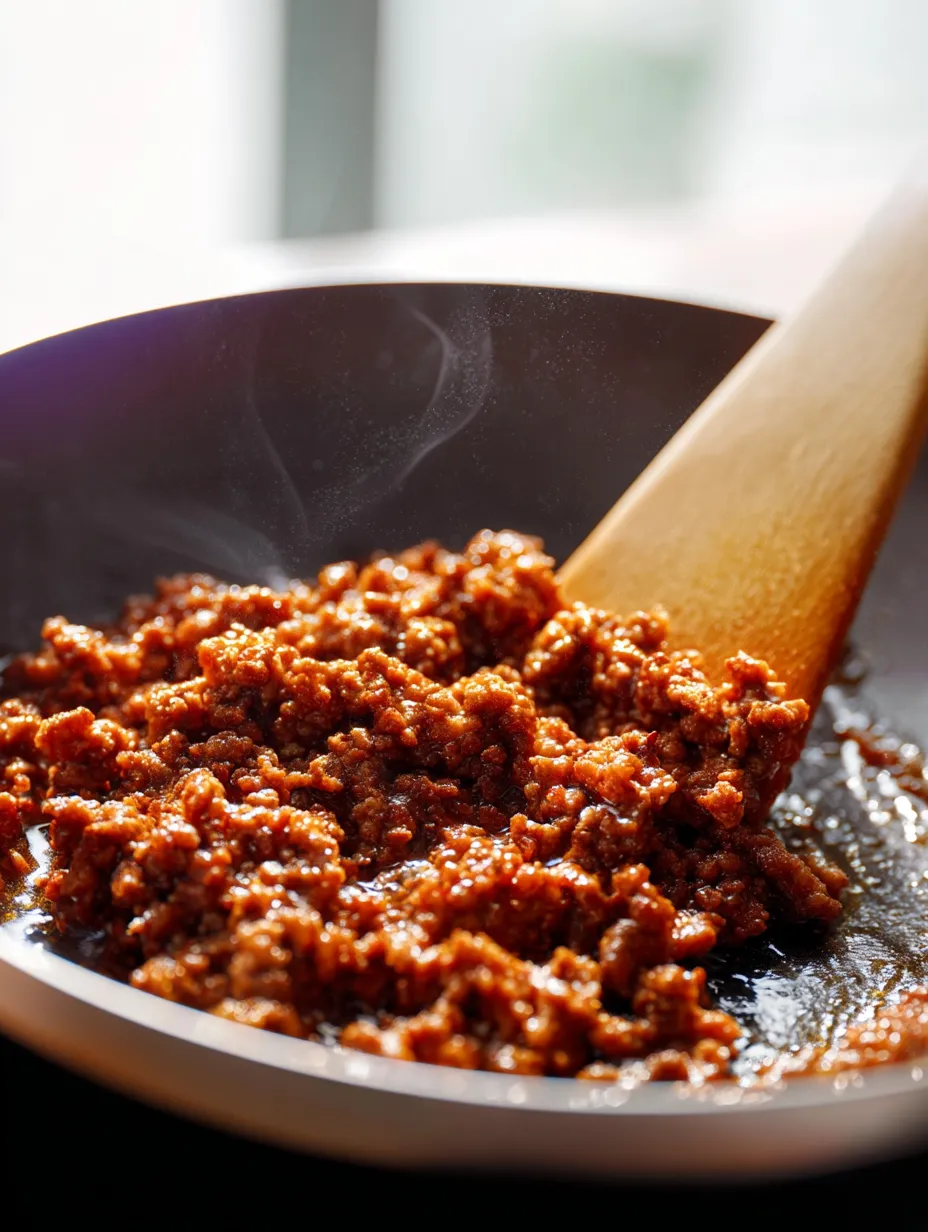 Save Pin
Save Pin
This flavorful nikumiso has completely changed how I cook on weeknights, adding authentic Japanese tastes to everything from basic rice dishes to fancy noodle meals. The mix of savory and sweet miso with pork makes an amazing flavor explosion that makes even simple ingredients taste great.
I started making this when I was trying to copy flavors from my favorite Japanese pub at home. Now it's my go-to trick when I need to turn basic ingredients into something impressive that wows my dinner company.
Ingredients
- Vegetable oil: Sets up the base for cooking your aromatics without taking over the flavor
- Garlic and ginger: Make the fragrant start that all good Japanese cooking needs
- Pork mince: Gives just the right meaty feel while soaking up all the amazing flavors
- Water: Creates the right thickness for your sauce
- Sugar: Evens out the salty miso taste with needed sweetness
- Red miso paste: Brings that deep, rich taste that makes this dish pop; try to find real Japanese brands
- Soy sauce: Adds layers of flavor and saltiness; Japanese types work best
- Cooking sake: Softens the meat and brings subtle depth; worth getting a good one
- Sesame oil: Adds that signature nutty finish that makes everything better
- Spring onions (optional): Give a fresh crunch and bright color on top
- Doubanjiang (optional): Brings nice heat if you like spicy food
Step-by-Step Instructions
- Cook your flavor base:
- Warm up vegetable oil in a big frying pan on high heat and toss in garlic and ginger. Cook for just 20-30 seconds until they smell good but haven't turned brown. This quick cooking lets out their flavors without burning them, which would make everything taste bitter.
- Cook the meat:
- Put pork mince in the pan and cook until it's nicely browned, about 3 minutes. Break it up with your spatula so it cooks evenly. Getting it brown is key for good flavor, so don't rush this part.
- Mix up the sauce:
- Turn heat down to medium-low and add water, sugar, miso paste, soy sauce, cooking sake, and sesame oil. If you want spice, add doubanjiang now. The lower temperature stops the sugars from burning while letting all the flavors mix together.
- Finish it off:
- Keep stirring and cook another minute until sauce sticks to the back of a spoon. It should look shiny and a bit sticky, not watery. This thickness helps it cling perfectly to rice or noodles.
 Save Pin
Save Pin
Red miso really makes this dish special. I almost used white miso that I already had in my fridge, but the deeper, richer taste of red miso gives that true authentic flavor that keeps me coming back to this again and again. My husband now asks for this weekly with just plain rice and some simple green veggies.
Storage Solutions
Nikumiso works great for planning meals ahead. Keep it in sealed containers in your fridge where it'll stay good for 2-3 days. The flavors actually get better overnight, so leftovers can taste even better than when freshly made. For keeping it longer, freeze portions in small containers or ice cube trays so you can thaw just what you need. The frozen stuff keeps its quality surprisingly well with no texture changes when you heat it back up.
Serving Suggestions
You can use nikumiso in so many ways. Put it on steamed white rice for a simple meal or drop a spoonful on top of ramen to make it extra good. For a light lunch, wrap it in lettuce leaves with cucumber slices and a bit of Kewpie mayo. One way I love to use it is on roasted eggplant halves, topped with the pork mix and quickly broiled. For an easy but fancy appetizer, serve small amounts over cold silken tofu with green onions on top and some toasted sesame seeds.
 Save Pin
Save Pin
Recipe Variations
Though pork is the classic choice, you can easily swap in other ground meats. Ground turkey makes it lighter, while beef adds more richness. If you don't eat meat, crumbled firm tofu or tempeh works great by soaking up all the tasty sauce. You can add finely chopped veggies like carrots, mushrooms, or bell peppers to make it healthier and go further. You can adjust how sweet it is based on what you like - using honey instead of sugar gives a more interesting flavor. If you want it spicier than what doubanjiang offers, try adding some gochujang or a sprinkle of shichimi togarashi at the end.
Common Recipe Questions
- → What dishes pair well with Nikumiso?
Nikumiso tastes great with steamed rice, mixed into ramen or udon, served on tofu, stuffed in onigiri, or wrapped in lettuce. It's also perfect for lunch boxes or stuffed inside eggplant.
- → Can Nikumiso be made spicy?
You can definitely kick up the heat by mixing in some doubanjiang chili paste. Just add more or less depending on how much spice you can handle.
- → How do I store leftover Nikumiso?
Pop it in a sealed container and keep in your fridge for up to 3 days. You can also stick it in the freezer for a month. Try freezing in small portions for easy meals later.
- → What are some garnishing ideas for Nikumiso?
Sprinkle some cut green onions on top or add a splash of sesame oil to give your dish extra punch and color.
- → Can I use a substitute for pork mince?
Sure thing, ground chicken, turkey, or crumbled tofu work well instead of pork mince.
